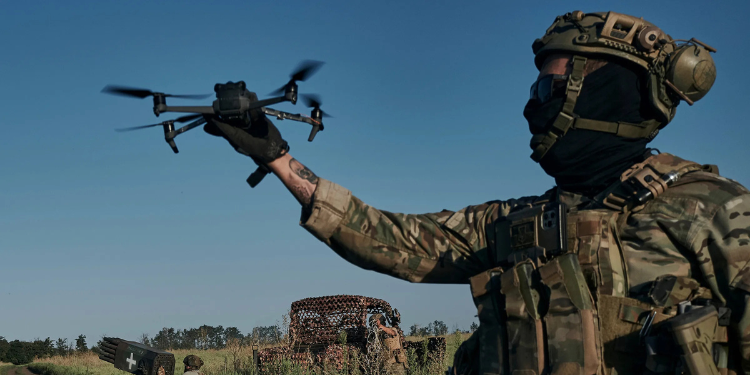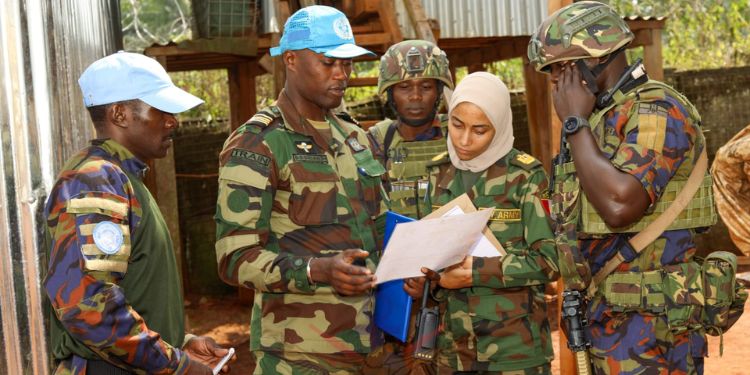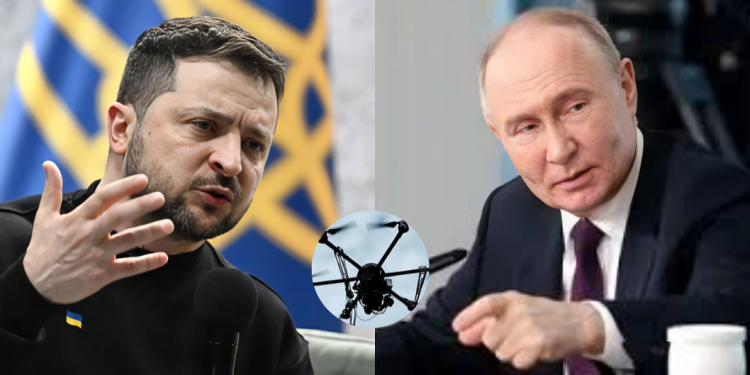Ukraine forces have recently intensified their use of drone warfare, successfully targeting and destroying Russian ammunition depots in occupied territories.
One of the most significant strikes occurred on the night of July 3, 2025, when Ukrainian drones hit a major Russian ammunition depot in Khartsyzsk, a city in the Russian-occupied Donetsk Oblast.
According to the grouping, drone operators took out a Russian IMR-1 obstacle-clearing vehicle, ammunition depots, a mortar, and enemy infantry.
Ukraine Drone Technology
Ukraine has adapted to war by developing long-range drones capable of striking deep within Russian territory, as evidenced by recent successes against Russian infrastructure.
FPV (First-Person View) Drones
FPV (First-Person View) drones have emerged as a transformative force in modern warfare, particularly in Ukraine’s defence strategy.
Also Read: China Responds to Trump Trade Deal with Vietnam
These drones, originally designed for recreational racing, are now modified for military use, carrying explosive payloads and piloted in real-time through video goggles.
Their agility, low cost, and precision make them ideal for kamikaze-style attacks on enemy vehicles, bunkers, and personnel.
Bomb-Dropping Drones
Bomb-dropping drones are another vital component of Ukraine’s drone warfare strategy, offering a flexible and cost-effective way to strike enemy positions from above.
These drones are typically modified commercial quadcopters or fixed-wing UAVs equipped with small explosive payloads, such as grenades, mortar shells, or custom-made bombs, that can be released with high precision.
Operators use real-time video feeds to guide the drone over enemy trenches, vehicles, or fortifications and drop the payload directly onto the target.
These drones can hover silently over enemy positions, making them ideal for surprise attacks. In some cases, they are used in coordination with reconnaissance drones to identify targets and assess damage in real-time.
Long-Range Strike Drones
Long-range strike drones are a critical asset in Ukraine’s ability to hit high-value targets deep behind enemy lines. These drones are typically fixed-wing UAVs with extended flight ranges, often exceeding 800 kilometers, and are capable of carrying significant payloads.
These drones are used for strategic strikes on Russian infrastructure such as ammunition depots, oil refineries, airfields, and command centers, often far from the front lines.
What sets long-range drones apart is their combination of endurance, precision, and autonomy. Many are equipped with GPS navigation, satellite communication, and advanced targeting systems, allowing them to fly pre-programmed routes or be guided remotely over long distances.
Ukraine has also developed kamikaze-style long-range drones that crash into targets with explosive payloads, functioning similarly to cruise missiles but at a fraction of the cost.
These drones have enabled Ukraine to project power into occupied territories and even into Russian territory, disrupting logistics and forcing Russia to divert resources to air defense.
Ukraine Elite Drone Units: The Phoenix Regiment
The Phoenix Regiment, officially known as the Phoenix Separate Regiment of Unmanned Systems, is one of Ukraine’s most elite and innovative drone warfare units.
This unit plays a central role in Ukraine’s “Drone Line” initiative, which aims to integrate unmanned aerial systems into every level of the military.
Also Read: Murkomen Wins Millions in Nairobi City Marathon
The Phoenix Regiment specializes in deploying FPV (First-Person View) and kamikaze drones for precision strikes, often operating in coordination with infantry and artillery units to create highly lethal “kill zones” along the front lines.
What sets the Phoenix Regiment apart is its combination of technical expertise, battlefield innovation, and tactical flexibility.
The unit has been credited with destroying a wide array of Russian assets, including tanks, artillery systems, and ammunition depots.
Their operations are often documented in dramatic footage showing drones chasing down enemy vehicles or dropping explosives with pinpoint accuracy.
As part of Ukraine’s broader strategy, the Phoenix Regiment exemplifies how asymmetric warfare, and technological ingenuity can level the playing field against a larger, better-equipped rival.
Follow our WhatsApp Channel and X Account for real-time news updates.























![Billions Each Top Kenyan Bank Has Made So Far In Profits This Year [List] Q3 2025 Results For Equity, Kcb, Co-Op, Absa And Other Banks]( https://thekenyatimescdn-ese7d3e7ghdnbfa9.z01.azurefd.net/prodimages/uploads/2025/11/C0-OP-KCB-Equity-Absa-360x180.png)


















































